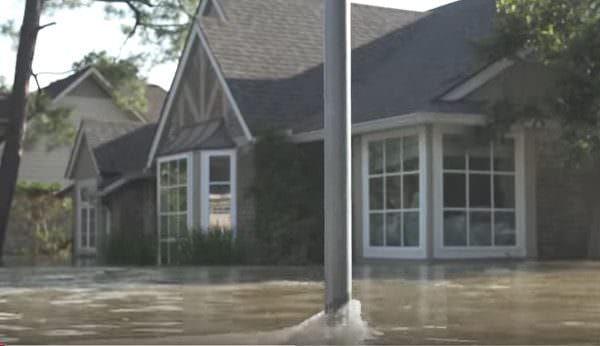
Posted on 09/18/2017 12:16:37 PM PDT by marktwain

With the recent impact of two hurricanes, Harvey and Irma, on the United States, there is going to be a lot of ammunition that was submerged for some time.
To prevent damage, many people keep ammunition in waterproof ammo cans. They tend to work very well, if the can is not submerged more than a few feet. Not everyone stores ammunition in ammo cans, and the cans can be damaged or leak.
The two storms flooded tens of thousands of houses. A recent survey showed that about half of the homes in the United States have a gun owner living in them.

The organization that sets the standards for firearms and ammunition manufacture in the United States, SAAMI (Sporting Arms and Ammunition Manufacturer's Institute), recommends zero tolerance for ammunition that has been submerged for any period of time.
(Excerpt) Read more at ammoland.com ...
I would pull some bullets apart and see whether they are wet. You may not find any that have been affected.
Most ammo is water tight and will shoot after being submerged.
For sure. Everyone knows you should only dry them using the microwave. ;-)
If they haven't been flooded, or overheated, they'll probably go 'bang' just fine. I have fired .30'06 and .303 ammo of that vintage. Had a few hangfires with the .303, but the '06 was fine.
If you mean paper shotshells then I would say most all would be damaged. In general shotshells have little to no water resistance. Some military shotshells are sealed but those are the exception. Brass cased ammunition on the other hand is usually fairly watertite even if the ammo is not sealed at the primer and case mouth. Actual sealed ammo will be good to go for sure.
My experience, after the Tulsa flood in 1976, is that ammo in a military storage ammo can will be just fine. Wet rimfire will be useless if not in such a can. Other wet ammo, if primer is sealed will work fine but I would not trust in in some situations.
I had some COLT brand plastic case wax bullets that were useless after the flood till reprimed. Beautiful COLT boxes destroyed.
DO NOT dry them out by a nice warm fire!
Desiccants sealed with Ammo in VacSeal bags then put in ammo cans works the best.
Or so I heard somewhere.
Indeed we did, and yours passed the inspection with a bang. :-)
I had to look that one up.
Possibly the most common term used in the military, at least until it was infested with the PC culture and all those that follow it.
I would pull the bullets, dump the powder, punch out the primers and reload.
Add some dessicant packs to the plastic bags to remove any remaining moisture.
Example of where to buy:
https://www.walmart.com/c/kp/desiccant-silica-gel
I found two military cans of linked 7.62 ammo in a creek years ago-it had been in the creek long enough that there was moss and crud on the cans. Opened it up and the cans were perfectly dry on the inside, had that distinctive ammo smell and fired perfectly.
From all I’ve heard, the river and lake beds of America must be completely lined with the carcasses of tragically lost guns. Some future civilization is going to be very perplexed. Why were the boats of this era so unreliable???
DOD GI ammo cans are ONLY storage I trust ..... do NOT rely on after market products shy of “maybe” Pelican products or Otterbox. NOT ....”MTM” products. I’ve kicked pelican cases off the ramp of a C-130 at 300 feet into the ocean and they didn’t leak.
I am not in a flood zone but do protect my stored commercial and reloaded ammo by using a flood saver vacuum bag system for individual boxes and then place in assorted 20mm, 10 inch fuse cans, 50 and 30 caliber Green GI ammo cans. Then I store those cans in pelican or yeti coolers for temperature stability in my shop that only is air conditioned when I’m working in there.......
Agree on wiping gaskets down now and then. I use Krytox from dupont .
Hope yer well bub.... stay safe !
Opened a case of 45 ball with date and lot numbers from frankfort arsenal dated 1934. My EOD team was conducting an ADR ammo destruct request on suspect lot numbers etcetera .... We “destroyed” one round at a time for a few cases ..... flawless function in our 1911A1’s...... Old ammo is not bad ammo IMO. Remember the 1600+/- rounds of russian tin containers full of 7.62X54R ? 1920’s era crap looked like it was loaded yesterday.
Wal-Mart Dessicant???
Who Knew!
That Russian stuff was probably corrosive primers, yes? But the USGI .45, not? Just curious, I have a rough idea what is likely corrosive, and what isn’t, but haven’t been around much that was that old to be worried about it.
I don’t have to worry about the coolers, I have enough space in my climate controlled basement.
Corrosive primers just means you clean the barrel with boiling water and/or military cleaning solvent after use.
Not hard to do with a .45 1911A1.
Will home owner’s insurance cover ammo?
Disclaimer: Opinions posted on Free Republic are those of the individual posters and do not necessarily represent the opinion of Free Republic or its management. All materials posted herein are protected by copyright law and the exemption for fair use of copyrighted works.